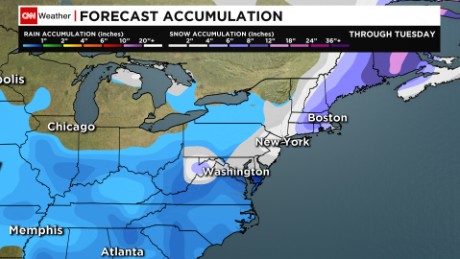

They start with a broad approach as soon as they feel snow is possible, then narrow down the impacts three to five days out and issue forecasted numbers roughly one to three days in advance. The weather service uses a funnel approach when it comes to snow forecasting. We can interpret this data from a variety of sources and equip you with a trusted forecast. This is why the role of your local meteorologist is crucial. It is important to gather information from a variety of forecast models, as small scale factors play a role and one model is not always the best. Therefore, weather forecast models can still change quickly. Marsili says the network of upper-air observations does not cover the entire United States and is not perfect. Not very many observation points are available on the Pacific Ocean satellite and aircraft observations are also available, but still do not capture the entire behavior of a weather system. The system then becomes easier to project into the future because of ground observations and upper-air balloon launches conducted by the weather service.

For a system tracking toward our area, the forecast models need the system to make landfall on the west coast. Models have trouble deciding on how weather systems will evolve if the system has not yet developed or is located over the ocean at the time of the forecast. It is important to understand weather forecast models are based on initial conditions. The data becomes less reliable past around four to six days in advance or sooner. Meteorologist Nathan Marsili with the National Weather Service in Northern Indiana says weather forecast models can vary considerably from day to day. The reality is this data should not be trusted. It looks very scientific and precise, with snowfall predicted down to a tenth of an inch for this upcoming weekend. WINTER WEATHER ADVISORIES have been issued for everyone across West Michigan starting at 7 p.m. You have likely seen a snow forecast far in advance like this one that was posted on Sunday. Our forecast models are leaning towards a widespread 3' to 6' of snow. (WANE) – With Indiana’s Winter Weather Preparedness Week underway, it is important to remember the limitations of long-range snowfall forecasting.


 0 kommentar(er)
0 kommentar(er)
